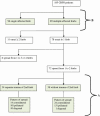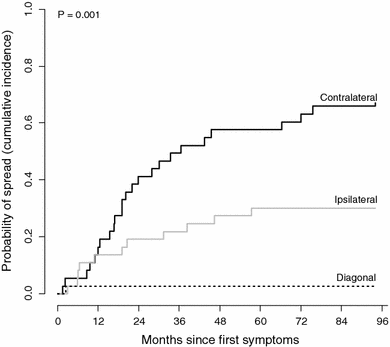Spreading of complex regional pain syndrome: not a random process
- PMID: 21331457
- PMCID: PMC3162139
- DOI: 10.1007/s00702-011-0601-1
Spreading of complex regional pain syndrome: not a random process
Abstract
Complex regional pain syndrome (CRPS) generally remains restricted to one limb but occasionally may spread to other limbs. Knowledge of the spreading pattern of CRPS may lead to hypotheses about underlying mechanisms but to date little is known about this process. The objective is to study patterns of spread of CRPS from a first to a second limb and the factors associated with this process. One hundred and eighty-five CRPS patients were retrospectively evaluated. Cox's proportional hazards model was used to evaluate factors that influenced spread of CRPS symptoms. Eighty-nine patients exhibited CRPS in multiple limbs. In 72 patients spread from a first to a second limb occurred showing a contralateral pattern in 49%, ipsilateral pattern in 30% and diagonal pattern in 14%. A trauma preceded the onset in the second limb in 37, 44 and 91%, respectively. The hazard of spread of CRPS increased with the number of limbs affected. Compared to patients with CRPS in one limb, patients with CRPS in multiple limbs were on average 7 years younger and more often had movement disorders. In patients with CRPS in multiple limbs, spontaneous spread of symptoms generally follows a contralateral or ipsilateral pattern whereas diagonal spread is rare and generally preceded by a new trauma. Spread is associated with a younger age at onset and a more severely affected phenotype. We argue that processes in the spinal cord as well as supraspinal changes are responsible for spontaneous spread in CRPS.
Figures


References
Publication types
MeSH terms
LinkOut - more resources
Full Text Sources
Medical

